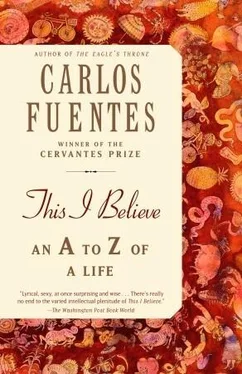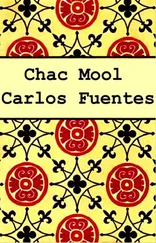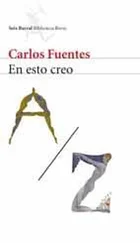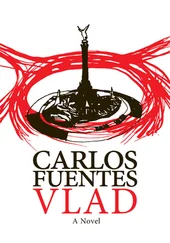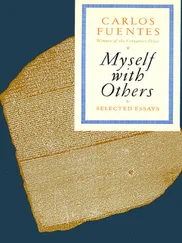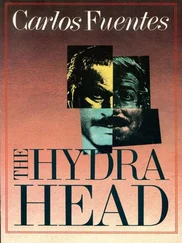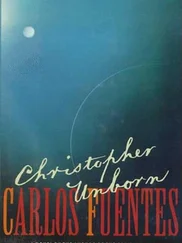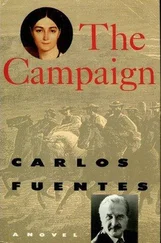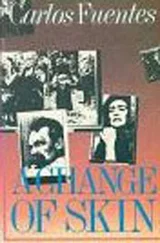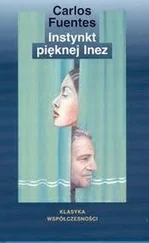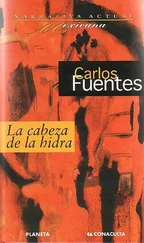There is no city without climate. Temperature is the vengeance of a nature that, when all is said and done, cannot be dominated by roof or street, by door, by the heat of a fireplace or the ice in a freezer. Nature all around us tells us, over and over again: choose. Nobody, nature says to us, can escape the dilemma between abandoning me to escape my suffocating embrace— even if the price is that of an errant orphanhood — and remaining forever in my savage and protective jungle, even if the price is that of abdicating the risks of freedom. .
Mexico: summer will arrive with the cry of dust defeated. London: spring will bloom in two youthful breasts behind a sheath of transparent organdy. New York: autumn will wear a crown of gold. Paris: winter will be a river of mist.
And outside the cities, the lakes and the fluvial waterways, forests and lands die at an unprecedented velocity. We are at risk of losing the equilibrium of the biosphere and condemning our descendants to live and die without nature. “The universe requires an eternity,” wrote Jorge Luis Borges. “And in the heavens,” he added, “the verbs preserve and create are synonyms.” Preserve and create are our rival verbs at the dawn of this new century.
The artist asks questions. An image can be conceived of and executed in a thousand different ways. Which way would you prefer? The figure of the one who was, who is, or who will be? And where would you like to see it: in the place of the figure’s origin, final destination, or present location? In which places and at which times?
In the iconic art of Byzantium, the extreme, culminating symbol of medieval painting, there is only one possible response to these eternal questions: the time within a painting is a singular time, and that time is eternity, the domain of a single figure: God, the Pankreator. The gaze of the Byzantine Pankreator, like Pascal’s circumference, is everywhere and nowhere. It gazes at us and we gaze upon it, but there is a barrier separating us: divinity. We are here, now. He is here, everywhere. Tomorrow, we will no longer be here. He will continue to be here, for the centuries to come.
Fernando Botero is right when he says that it was Giotto who sparked the great modern revolution in art. Instead of the distant veneration of the Byzantine, Giotto infuses art with the urgent passion of the Italian and even perhaps the Franciscan world. St. Francis’s personal, passionate commitment is the very matter of religion and life, and is a mirror of the emotional engagement Giotto brings to the craft of painting. Piero della Francesca will strengthen the force of this revolution; the Arezzo and Sansepolcro frescos definitively yank painting out of its divine paralysis and its frontal gaze. Piero’s figures sometimes even dream — or dare to dream, like the sleeping figures at Sansepolcro. But most of all they dare to look. In Arezzo, the figures look out beyond the painting, toward a horizon or a person that we do not see. Piero died in 1492, the very same year of the American Discovery, and perhaps he is looking as far away as the Mundus Novus baptized by another Italian, Amerigo Vespucci. It almost seems as if Piero is telling us, I am going to paint a piazza with a deep perspective, one that is as fluid as the time that witnesses birth, growth, and death, and as slippery as the boundless space in which the designs of God are fulfilled through human action. This is where we find real houses, doors, stones, trees, men — no longer space without relief, or time without the hours of the original God Creator, but rather space as place and time as scar of creation. After Giotto and Piero the painter can say, “Blind men, look, I paint to look, I look to paint, look at what I paint, and what I paint, by being painted, looks at me and, in the end, looks at all of you, who look at me looking at my painting.” “Yes,” says Julián, the painter in my novel Terra Nostra, “only what is circular is eternal and only the eternal is circular, but within that eternal circle, there is room for all the accidents and variants of the freedom that is not eternal but instantaneous and fleeting.”
Paradoxically, Renaissance freedom is brought to its apogee by a Spanish court painter who produced commissioned works and used royal patronage to elevate the freedom of the artist to its very highest form and to revolutionize art itself. Just as Cervantes did in Don Quixote, Velázquez, in Las Meninas ( The Maids of Honor ), uses the restrictions of time and space not only to mock them (that would be easy) but to create an alternate reality alongside the orthodox “truth,” and this reality is based on the freedom of the imagination. An infinitely more daunting task. While the Counter-Reformation orthodoxy accepts one single point of view, Cervantes in literature and Velázquez in painting offer multiple verbal and visual points of view. When they discover that their adventures have been made public — that is, published— Don Quixote and Sancho Panza realize that they have been read and seen by others. The others surround us. We read. We are read. We see. We are seen.
In Las Meninas, we surprise Velázquez while he is painting. He is doing what he wants to do, what he is able to do: paint. But this is not a self-portrait of the painter painting. It is a portrait of the painter who not only paints but is looking at what he is painting and who, moreover, knows that the people he is painting are looking at him as are the spectators who look at him from outside the painting, painting. Us. This is the necessary if uncomfortable or imperfect distance that Velázquez wants to eliminate, by introducing the viewer into the painting and projecting the painting beyond its frame and into the immediate, present space of the viewer.
But firstly: who is Velázquez painting? The princess, her maids, the midget girl, the sleepy dog? Or the gentleman dressed in black who appears at the entrance to the studio — the painting — upon an illuminated threshold? Or is Velázquez painting the two figures reflected, rather opaquely, in a cloudy mirror lost in the darkest corners of the atelier: the father and mother of the little princess, the king and queen of Spain — granting us, according to Michel Foucault’s celebrated interpretation, the “place of the king”?
In any event, we can also believe that Velázquez is there, brush in one hand, palette in the other, painting the painting that we are looking at, Las Meninas. We can believe that this is the case — but only until we realize that the majority of the figures in the scene, with the exception of the sleepy dog, are looking directly at us. At you and me. Is it possible that we are, in fact, the true protagonists of Las Meninas, the painting that Velázquez, at this very moment, is painting? Well now, if Velázquez and the entire court are inviting us to enter the painting, then the painting, at the very same moment, is most certainly taking a step forward to become united with us. This is the true dynamic of this masterpiece. We are free to look at the painting — and by extension, the entire world — in various different perspectives, not just one that is dogmatic and orthodox. And we are aware that both painting and painter are gazing out at us. Just like the luncheon companions in Manet’s Déjeuner sur l’herbe, which is scandalous because we find two clothed men and one naked woman gazing at us. Would there be any scandal at all in this painting if they weren’t looking at us — if they were looking out toward the forest, for example, or the background, or the edges of their little picnic site? The circle is completed. The icon, at one time, gazed out toward eternity, frontally. Piero della Francesca looks toward both sides, beyond the formal limits of the painting. And Manet looks straight back at us, not from the eternal but rather the present moment. Braque and Picasso, finally, would multiply the gaze simultaneously in all directions — both the gaze of the painting’s subject as well as our own gaze, directed toward a subject that we see simultaneously, in all its various perspectives.
Читать дальше
